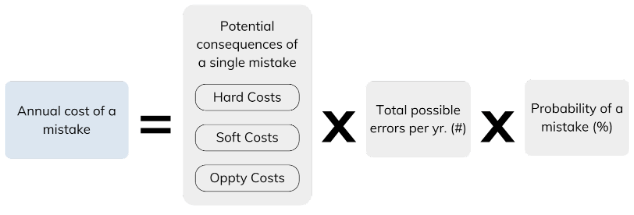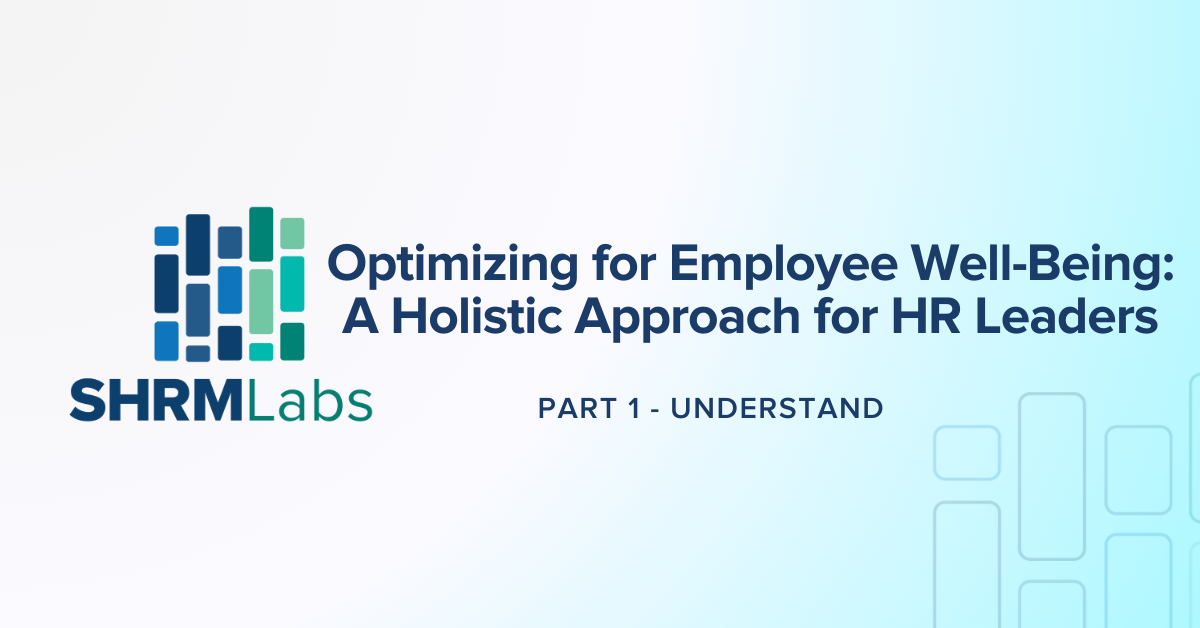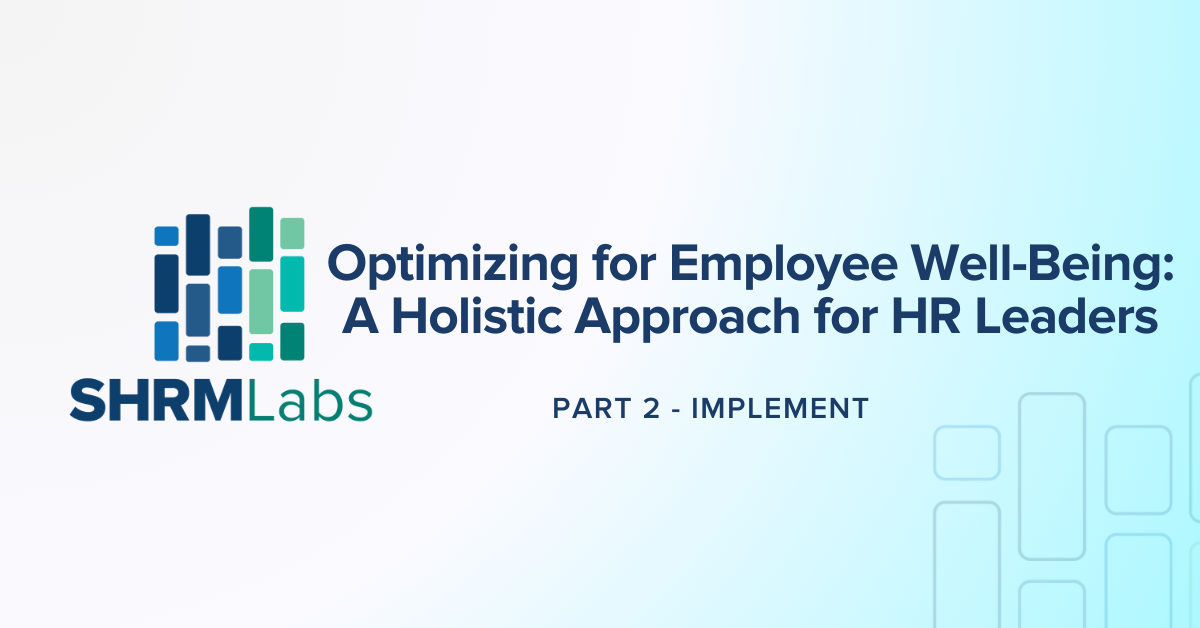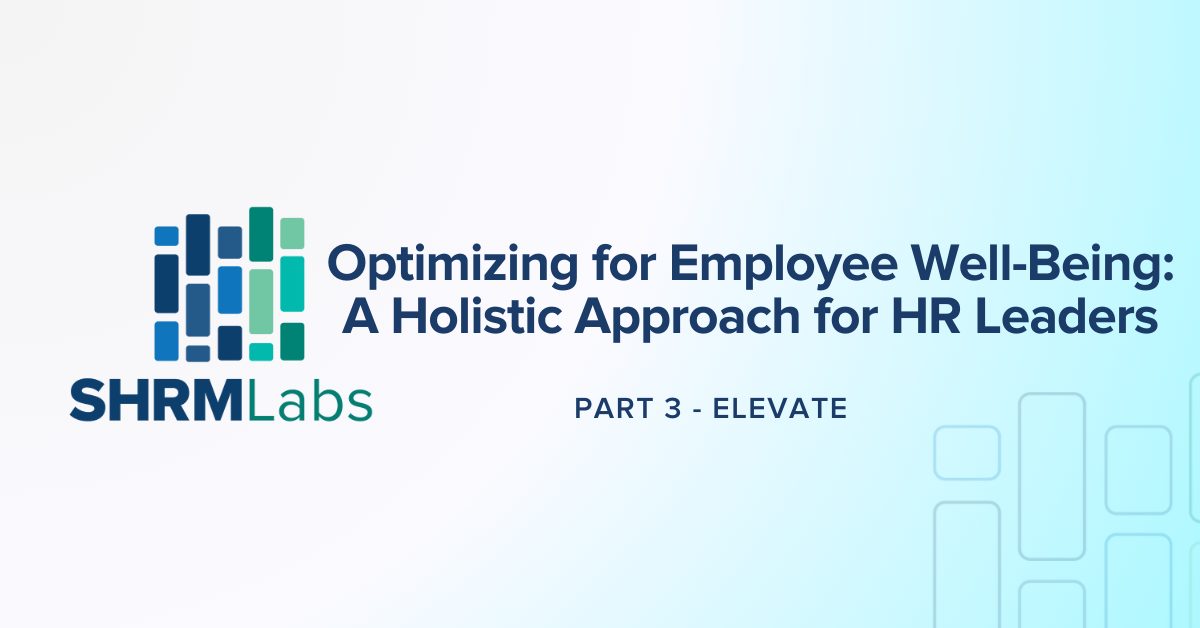Measuring the ROI of Your Training Initiatives
Unlocking Insights into the Effectiveness of Your Employee Development Programs
Before we begin…
Welcome to the WorkplaceTech Pulse, presented by SHRM Labs. We are expanding our resources to bring you the best possible information from leaders in HR technology and transformation.
My name is Nell Hellem, innovation catalyst at SHRM Labs. You will hear from me as well as my colleagues every other week with the release of each new edition. Let us know any topics you’d like to hear about related to workplace tech and we will consider them for future editions of the WorkplaceTech Pulse.
Introduction
In today’s fast-paced business environment, organizations are constantly seeking ways to stay ahead of the curve. One key strategy is investing in employee development through training programs. However, proving the value of these programs has long been a challenge for HR professionals. This week, we are delving into the critical topic of measuring the return on investment (ROI) of training initiatives. We will explore the reasons why this is more important than ever, the challenges it presents, and practical approaches to quantify the benefits of employee development in dollar terms.
I’m excited to introduce this edition’s contributor, Sasha Seymore, co-founder and COO of Learn to Win. Sasha, over to you!

Thanks, Nell! I’m Sasha Seymore, co-founder and COO of Learn to Win, a learning software that empowers organizations to teach faster and more efficiently and prepare their people to perform their best. We’ve worked to improve training and onboarding across commercial enterprises, the U.S. Department of Defense, and athletics teams and programs.
In addition to my role at Learn to Win, I serve as a reserve intelligence officer for the U.S. Navy. My work there involves bridging the gap between emerging commercial technologies and the strategic needs of the U.S. military, ensuring that our defense forces are equipped with cutting-edge tools and solutions.
My journey has spanned from consulting at McKinsey & Company to playing professional basketball in Europe, instilling in me a deep appreciation for teamwork and strategic innovation. I also serve on the National Leadership Council for the Positive Coaching Alliance and was named to the 2022 Forbes 30 Under 30 List in Education.
My mission is to leverage technology and learning sciences to inspire and effect change in the world. I’m excited to dive in and explore how we can achieve that mission through understanding the ROI of HR training.
Be sure to check out all of our editions of the WorkplaceTech Pulse!
The Training ROI Dilemma
Picture this: You’re an HR manager gearing up to pitch next year’s training budget. You’ve spent weeks, maybe months, planning a robust lineup of workshops, online courses, and team-building exercises.
These aren’t just events on a calendar, they’re investments in your company’s most valuable asset—its people. Yet, as you stand before the executive team, ready to make your case, a nagging question echoes in the back of your mind: “How do we really measure the ROI of our training efforts?”
This scenario is all too familiar in the corporate world. HR professionals everywhere face the challenge of proving the worth of their training programs. In an era when every penny counts, showing the tangible benefits of these initiatives is crucial.
But let’s be honest, calculating the ROI of training isn’t straightforward. It’s about more than just crunching numbers; it’s about demonstrating how investing in your team today can lead to measurable success tomorrow.
So, why does this matter? As businesses evolve at an unprecedented pace, staying ahead means investing not just in new technology or marketing strategies, but also in your people.
But how exactly do you measure something as abstract as employee development?
Training ROI Equals Bang for Your Buck
When leaders ask to understand the ROI of an initiative, what they’re really asking is, “How much benefit did we get out of this project relative to its cost?”
In short: “How much ‘bang’ did we get for the ‘buck’ we invested?”
When it comes to training, this question can be challenging to answer. Unlike other investments for which the return may be more tangible and immediate, the results of employee development efforts may not always be as clear-cut.
But that doesn’t mean it’s impossible to measure. In fact, the basic formula for calculating the ROI of training is actually quite simple.

As you can see, you only need two data points to calculate training ROI:
The benefits of the training initiative (measured in dollars)
The cost of the training (measured in dollars)
But as with anything, the devil is in the details. Before we break training ROI into its key components, let’s start by understanding the broader context of why it matters in the first place.
The Importance of Measuring Training ROI
In HR, you may encounter skeptics who question the value of training. They may argue that it’s difficult to quantify or that it doesn’t directly impact business outcomes.
However, measuring training ROI is crucial for several reasons. It
Demonstrates the value of training: By calculating ROI, you can provide tangible evidence of how your organization is benefiting from training initiatives.
Helps align training with business goals: When you measure the impact of training on business outcomes, it allows you to make strategic decisions about future training programs and ensure they are aligned with overarching business objectives.
Justifies training budget: In today’s competitive business landscape, budgets are constantly under scrutiny. By showing the ROI of training, you can justify the investment and potentially secure more resources for future initiatives.
Drives continuous improvement: Measuring ROI allows you to identify areas for improvement in your training programs and make necessary adjustments to maximize their effectiveness.
Challenges of Calculating Your Training ROI
We’ve touched on the benefits of measuring training ROI, but it’s important to acknowledge that it can be a complex and challenging process, especially when you don’t know what factors to consider or how to measure them accurately.
The most obvious challenge is the intangibility of training’s impact. Unlike sales or marketing initiatives, which have clear and direct impacts on revenue, the effects of training are not always as evident or immediate. How do you measure the increased collaboration, the spark of innovation in your team, or that overall happier workplace vibe after a training session?
Another challenge is the difficulty of collecting meaningful data. Even when we identify what we want to measure (be it tangible or intangible), collecting relevant, reliable data poses its own set of obstacles. For tangible outcomes such as an increase in sales or a decrease in turnover rates after training, the issue may involve setting up systems to track these metrics accurately over time. For intangible benefits, the challenge is even greater, requiring creative approaches to assessment such as surveys, 360-degree feedback, or other qualitative measures.
And, perhaps the most challenging of them all, you’ll need to get organizational buy-in. Employees are hesitant to change, and when you start discussing ROI, it may be met with resistance. Some may view this process as an added burden or a way to scrutinize their performance. And leadership may be hesitant to invest in ROI measurement if they don’t see the immediate benefits (see my eloquently put ‘bang for buck’ analogy).
In those moments, well-supported data that breaks down the myriad benefits (and costs) of training can be a powerful tool in your arsenal.
Measuring the Benefits of Training in Dollar Terms
The basic formula for calculating the ROI of training only goes so far. It doesn’t cover the abstract benefits that are often the most valuable and impactful. But, if we’re being honest, organizations want to see numbers in dollar terms—it’s a language they understand and trust. So, how do we bridge the gap between intangible outcomes and tangible ROI?
At Learn to Win, we recommend one of the following three approaches to quantify the benefits of your training initiatives in dollar terms:
Calculate the dollar impact of improving new employee onboarding.
Calculate the dollar impact of decreasing employee turnover.
Calculate the dollar impact of reducing operational errors.
Let’s walk through each approach and see how it can be utilized to measure the ROI of training.
Approach 1: Calculate the Dollar Impact of Improving New Employee Onboarding
According to the Brandon Hall Group, organizations with a strong onboarding process improve new hire retention by 82 percent. This means that for every employee who stays on board because of your training program, you are saving the cost of hiring and training a new employee.
And yet, despite the need to nail down the onboarding process, the first day of new employee training can feel like drinking from a firehose. New team members need to master huge volumes of industry knowledge and company-specific information to succeed in their jobs.
For companies, it’s expensive and time-consuming to onboard new employees. And, too often, it’s a waste of time and money. According to the Harvard Business Review, it typically takes eight months for a newly hired employee to reach full productivity, and 33 percent of new hires start looking for a new job within their first six months.
You can create major financial gains for your company by improving your onboarding program. By reducing the time it takes for new employees to become fully integrated into their roles, companies can save large amounts of money.
A better onboarding program can improve your company’s bottom line in four measurable ways:
Fewer days onboarding. By streamlining the onboarding process, organizations can reduce the time and resources spent training new employees so that they can start contributing to the company sooner.
Faster ramp-up of new employees. When onboarding is done effectively, new employees can quickly become productive and contributing members of their teams.
Reduced churn during onboarding. Employees who have a positive onboarding experience are less likely to leave the company during their first few months of employment. This reduces the costs associated with recruiting, hiring, and training new employees.
Cost savings. Onboarding often involves a series of costs (trainer time, travel, materials) that can add up quickly. By streamlining the process and reducing the time it takes for new employees to become productive, companies can save money on these expenses.
By viewing this as an investment rather than a cost, companies can see the value in allocating resources to improving their onboarding program. Showing that investment is easier than ever once you understand what you’re measuring and why.
Simply input the variables below and you’ll have the ROI impact of your improved onboarding program in seconds.

Approach 2: Calculate the Dollar Value of Reducing Employee Turnover
Every time a skilled employee leaves your team, it costs your company money to replace them.
Research suggests that the cost of employee turnover can total 150 percent of that employee’s annual compensation. For managerial roles, that number is significantly higher—200 percent to 250 percent of annual compensation.
In other words, for a company with an average salary of $50,000, the cost of turnover is $75,000 per departing employee per year. For a company of 500 workers with a 10 percent annual turnover rate, that works out to nearly $3.8 million per year!
Through better training, you can give that money back to your company. Deloitte estimates that effective training can reduce employee turnover by 30 percent to 50 percent.
How can you calculate the true cost of turnover in your organization? Consider four cost categories:
Covering the role. Include the cost of filling the vacant position with temporary or existing employees. If you can’t fill the position, you’ll want to account for the cost of lost productivity.
Filling the vacant position. Include the cost of advertisements, recruiters, and hours spent screening and interviewing candidates.
Onboarding a new employee. Include materials, travel, and trainer time.
Ramping up for the new hire. When new employees first join your company, they’ll spend more time learning than producing. Therefore, you’ll want to estimate the ramp-up time for new team members and account for lost productivity costs.
Each of these categories has its own set of costs, both tangible and intangible. For example, the cost of lost productivity can be difficult to quantify but can have a significant impact on your company’s bottom line.
To truly understand the cost of employee turnover, it’s important to take into account all of these factors and calculate them accurately. By doing so, you’ll have a better understanding of the true cost and be able to make informed decisions on how to reduce it.
Now that you’ve calculated the dollar value of reducing employee turnover at your company, simply incorporate the cost of the training initiative to complete your ROI calculation.

Approach 3: The Value of Reducing Costly Operational Errors
Operational errors cost your company money every day. Therefore, if your training can reduce or eliminate the highest-impact mistakes that employees make, you can drive significant business impact for your company.
Start by thinking broadly about the full range of things your employees need to do in their jobs. Over the last three to six months, what kind of operational mistakes have you observed? These might include payroll processing errors, compliance oversights, or inefficiencies in recruitment strategies—areas where precision is crucial.
To decide where to focus your training, you can estimate the relative business impact of each mistake.
To do that, brainstorm the range of potential consequences that could result from each error. Each consequence has a potential cost, and those costs fall into three broad categories:
Hard costs. Direct financial losses are the simplest to quantify. This includes expenses like correcting payroll errors or legal fees from compliance violations. These costs should be tallied as part of the operational mistake’s overall expense.
Soft costs. These involve the time managers spend rectifying an error, the negative impact on employee morale, or damage to the company’s reputation. Soft costs also encompass the potential loss of employee trust or engagement due to mishandled HR practices.
Opportunity costs. Think about this in terms of lost future revenue. In an HR context, you might consider the lost potential of a high-performing employee who leaves due to dissatisfaction or the diminished employer brand that makes top talent less likely to apply.
After identifying these costs, assess each mistake based on its likelihood of recurrence and the probability of sustaining the identified hard, soft, and opportunity costs. Use historical data and insights from past incidents to inform these estimates.
How many times is the given mistake likely to occur each year? When the mistake occurs, how likely are you to experience each of the hard, soft, and opportunity costs you identified? You can use historical data to estimate these probabilities.

By carefully considering each potential consequence and putting a dollar value to it, you can estimate the true cost of each operational error. This exercise may reveal surprising results, such as a seemingly minor mistake actually having a high overall cost.
Conclusion
Now that we’ve walked through three different approaches to calculating the dollar value of your training initiatives, you have everything you need to calculate the hard ROI of training. But, we also know how time-consuming that calculation process can be, even when you have all the data in front of you.
That’s why we made an ROI calculator template on Excel for you.
You can simply input the relevant data and have the calculator do the heavy lifting for you. This will not only save you time but also give you a more accurate and comprehensive view of your training ROI.
Now that you’ve finished, pause for a moment, zoom out, and reflect on what you just accomplished. While most leaders give up on trying to measure the business benefits of training, you didn’t, and now you have the insights you need to make informed decisions about your training program. Your efforts will pay off in the long run and help ensure that your organization is learning from its training investments.
References and Further Reading
https://b2b-assets.glassdoor.com/the-true-cost-of-a-bad-hire.pdf
https://hbr.org/2015/03/technology-can-save-onboarding-from-itself
https://www.peoplekeep.com/blog/employee-retention-the-real-cost-of-losing-an-employee
https://action.deloitte.com/insight/2737/workers-are-leaving.-what-can-you-do-about-it
Thanks for joining us for this edition of the SHRM Labs WorkplaceTech Pulse! Thanks again to Sasha for his incredible insight on the topic of training ROI, and thanks to Learn to Win for collaborating on this article. Please visit their website to learn more about the great work they are doing around workplace training. We will see you next time!
Learn to Win is a mobile-first learning software at the forefront of workplace training, making learning accessible and convenient for all employees. Learn to Win's platform makes it fast and simple for teams to create and deliver effective training programs that result in tangible improvements in employee performance and productivity.

SHRM Labs, powered by SHRM, is inspiring innovation to create better workplace technologies that solve today’s most pressing workplace challenges. We are SHRM’s workplace innovation and venture capital arm. We are Leaders, Innovators, Strategic Partners, and Investors that create better workplaces and solve challenges related to the future of work. We put the power of SHRM behind the next generation of workplace technology.
Related Articles
Part 1 - Understand. Delve into the fundamentals of employee well-being, offering HR professionals a comprehensive understanding of this critical aspect of modern organizational life.
Part 2 - Implement. Explore the methods our team at Rizewell employs to assist organizations in deploying wellness strategies effectively.
Part 3 - Elevate. Leveraging technologies such as VR/AR and AI improves employee well-being and significantly contributes to organizational success in a competitive market.




